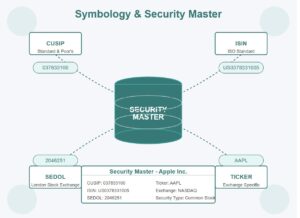Home Education center Unpacking Investment Strategies: The Role of Factors
Unpacking Investment Strategies: The Role of Factors
Table of Contents:
Investment strategies have evolved drastically over the past few decades, increasingly leaning on sophisticated concepts to guide portfolio success. Among these concepts, investment factors—cornerstones of modern portfolio theory—play a pivotal role. Factors are measurable characteristics that help drive the performance of securities. Some of the most recognized factors include value, growth, momentum, and quality, each offering distinct insights into market behaviors.
For example, value factors focus on uncovering assets trading at prices lower than their intrinsic worth. This might involve identifying a stock undervalued due to temporary market pessimism, despite its robust financial fundamentals. Growth factors focus on companies with high revenue potential, often tech startups driving innovation. Understanding these factors helps investors tailor strategies to their goals while navigating market trends.
Redefining Investments: Factor Integration in Direct Indexing
The advent of direct indexing represents a revolution in investment management, fundamentally altering how portfolios are constructed and managed. By facilitating bespoke portfolio construction embedded with specific factors tailored to individual preferences, direct indexing exceeds the conventional one-size-fits-all nature of mutual funds or ETFs and provides unmatched customization.
Consider the case of Environmental, Social, and Governance (ESG) factors, which appeal significantly to socially conscious investors. These investors prioritize companies with sustainability credentials or equitable governance structures. For instance, an investor passionate about climate change might choose to overweight renewable energy firms while excluding fossil fuel stocks. Similarly, Smart Beta strategies utilize factors like momentum and low volatility to systematically enhance risk-adjusted returns.
The seamless integration of these factors within portfolios optimizes them not only for market performance but also for alignment with the investor’s ethical and financial priorities, thus crafting a meaningful investment experience.
Adapting to Change: The Power of Factor Tilts
Factor tilts let investors adjust portfolios dynamically, emphasizing attributes that align with market conditions or personal goals.
For example, during economic uncertainty, tilting toward low-volatility stocks like consumer staples adds stability. Income-focused investors might favor high-dividend stocks in real estate or telecom for steady payouts.
This flexibility allows investors to adapt to macroeconomic shifts, geopolitical events, and sector trends, ensuring a resilient, forward-thinking strategy.
The Pillars of Portfolio Success: Factor Exposure, Diversification, and Risk Management
A strong portfolio relies on three key pillars: balanced factor exposure, diversification, and risk management. These elements create resilient, growth-focused strategies.
Diversifying across factors like value, momentum, and quality helps mitigate risk. While momentum may struggle in downturns, value can provide stability, acting as a hedge. This approach reduces volatility and supports long-term success.
Aligning factor exposure with risk tolerance ensures investors stay confident and focused on their strategic goals, even in volatile markets.
Advanced Strategies: Multi-Factor Models and Custom Index Construction
Multi-factor models introduce a sophisticated investment approach through the combination of several complementary factors to enhance portfolio outcomes. For instance, blending growth and quality factors might target firms poised for rapid expansion and exhibiting strong financial health, like leading tech companies with consistent earnings growth.
Custom index construction further refines this process, aligning portfolios with specific priorities or themes. An environmentally-focused investor, for example, might overweight renewable energy stocks while excluding carbon-intensive industries. Similarly, a dividend-focused investor might develop an index emphasizing dividend aristocrats—companies known for consistent dividend increases over decades.
These advanced strategies democratize portfolio precision, making the level of customization usually reserved for institutional investors accessible to a broader audience, ultimately ensuring alignment with both financial and thematic goals.
Beyond Returns: Investing with Purpose and Precision
In today’s investment landscape, success is measured by more than just financial returns. Increasingly, it’s about aligning portfolios with broader life goals and values. Direct indexing serves as a robust platform to harmonize these objectives, transforming investment portfolios into tools for both financial success and personal expression.
Consider a parent saving for their child’s education. They might construct a portfolio focused on steady, risk-adjusted growth while avoiding high-volatility sectors. A retiree preparing for their future might emphasize income-generating assets, such as Real Estate Investment Trusts (REITs) or dividend-paying stocks, to ensure financial stability.
Beyond financial goals, personalization stretches towards ethical considerations. An investor passionate about ethics might exclude tobacco or defense stocks, choosing instead to focus on healthcare innovations or green energy initiatives. Regular rebalancing keeps these portfolios adaptive and ensures alignment with shifting market conditions and personal aspirations.
Ultimately, direct indexing bridges the gap between wealth creation and purposeful investing, empowering investors to achieve their objectives while creating a meaningful impact in the world.
Related Links
Offer personalized experiences for every client at scale




